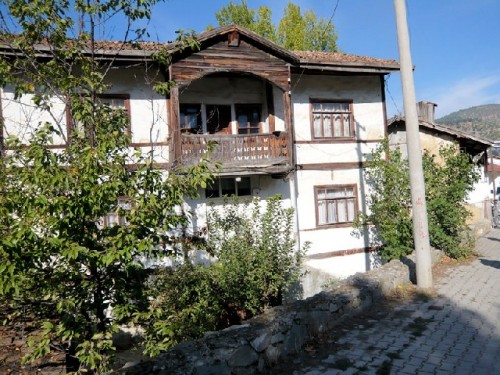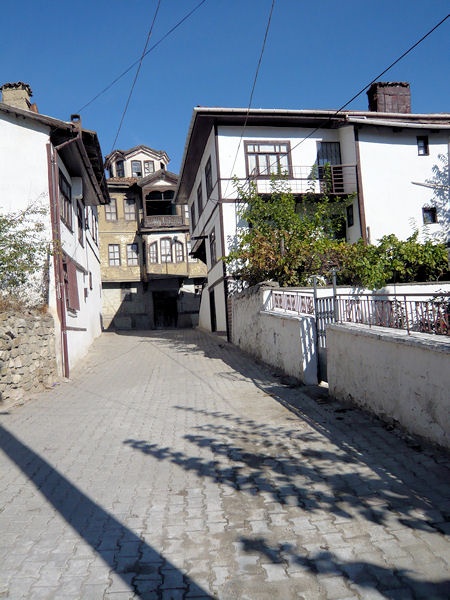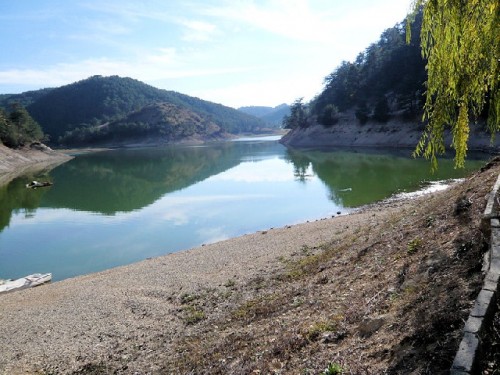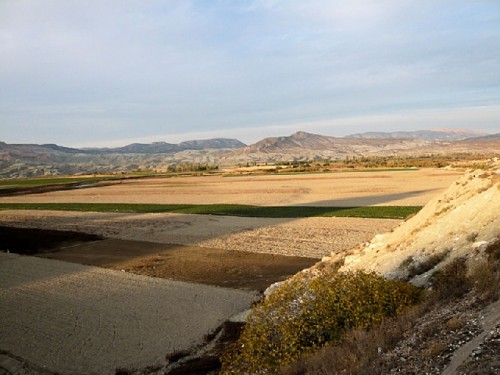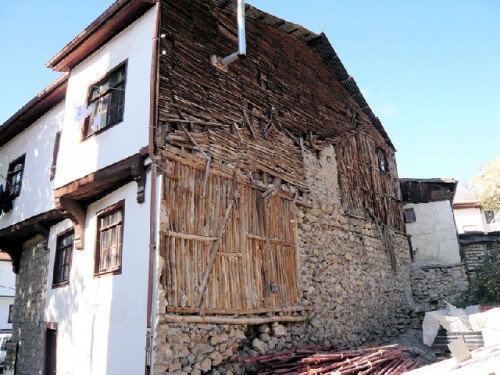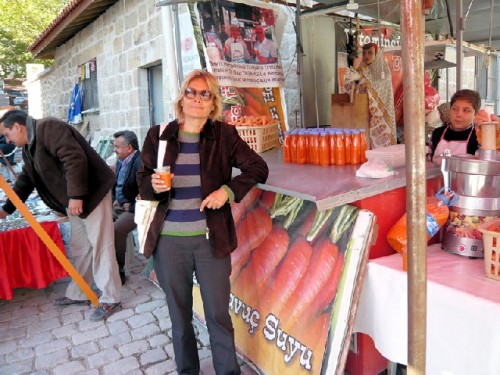Turkey: Ottoman Towns of Anatolia
Along the Silk Road inTarakli, Goynuk, Beypazari
By: Zeren Earls - Jan 11, 2008
Traveling to Turkey twice a year gives me the opportunity to explore areas of the country unknown to me. In late October while I was in Istanbul, my sister and I enjoyed a two-day tour to Beypazari, a historic town 100 km west of Ankara. The tour, booked on the internet, cost around $150 per person including bus fare, overnight hotel and most meals.
It took a full day to get to our destination on the historic Silk Road from Istanbul to Baghdad because of multiple stops for sightseeing and tea breaks. Turks are heavy tea drinkers. Our first stop was in Sapanca, named after the lake it sits astride. Trout fishing is the major industry in the area, known as Bithynia in 1200 BC. We drove by white cherry and quince orchards and many vineyards. The landscape grew greener as we crossed the Black Sea region and began climbing winding mountain roads, ears popping as we gained height and arrived in Tarakli amidst poplar trees in their golden yellow autumn glory.
Tarakli is an old Ottoman town, which takes its name from its comb industry, the Turkish word for comb being tarak. Its houses, most of which are over150 years old, are under renovation by the government. One of these buildings serves as the Museum of Ethnology, with kilims on the floors and low divan seating in the perimeter of its small rooms. A short distance away is Goynuk , a picturesque town situated on hills and valleys surrounded by lush mountains and lakes, which are popular resorts. We stopped at Sunnet Lake for tea; one hotel advertised itself as a place for "natural bypass".
According to archeological finds, Goynuk's first inhabitants were Phrygians. After changing many hands, it became Ottoman territory in 1323. Following lunch, we walked around the town's architectural treasures: a 14th-century mosque, a public bath which is still in use, and the Aksemseddin Mausoleum built in 1464 by the conqueror of Istanbul, Sultan Mehmet, in honor of his teacher, who was from Goynuk. Of more recent vintage were 19th-century Ottoman homes and the Victory Tower, built in 1922 to honor those who fought for Turkey's independence. The three-story tower stands on an octagonal stone foundation. Despite a major earthquake in 1967, all these structures facing narrow cobblestone streets, are still standing and have undergone restoration.
Goynuk is rich in underground lignite and its economy is driven by its poultry industry and agriculture. Its major crafts are copperware, woodwork (especially spoons), embroidery and textiles. Large white head covers, worn by local women, have colorful stylized flowers along the borders with small black motifs in the center. I had to have one of these printed fabrics, sold for around $5, to use as a table cloth.
Continuing on the Silk Road, we descended from the mountains to a high plateau of arid beauty with varying earth tones. Sculpted hills with flat tops surrounded brown, beige and ochre fields. Around Nallihan goats grazed on stubby green plants which pushed through red and gray clay soil. In this Anatolian heartland surrounded by steep and barren, yet picturesque hills sits Beypazari. A well-protected town, it has been inhabited by Hittites, Phrygians, Galatians, Romans, Byzantines, Seljuk Turks and Ottomans, and served as a trade center on the Silk Road.
Close to sundown we arrived at our centrally located hotel across from city hall. We then enjoyed a short walk through town to Bagevi (Vineyard House) to feast on local specialties. Tarhana soup, made from sun-dried and sieved sheets of dough first kneaded with fresh tomatoes, yoghurt, herbs and spices, was delicious. Fresh grape leaves stuffed with ground lamb and rice and cooked with plum paste were not only tasty, but also the thinnest I had seen. The main course, lamb guvec, a rice casserole baked in earthenware pot in a stone oven, lived up to its reputation. For dessert we had baklava made from 80 thin layers of dough with walnut stuffing between every five layers and baked for four hours. Dinner was accompanied by a group of musicians and singers who performed classical Turkish songs. The owner of the restaurant and his 84-year-old father took to the dance floor, while patrons clapped along. The only downside to this enjoyable evening was the swirling cigarette smokes at the tables.
For breakfast we walked over to Tas Mektep (Stone Schoolhouse), built in the 19th century as a Koran school and now functioning as a restaurant. The two-story stone building is devoid of any ornamentation, with the exception of its many windows and wooden ceilings. Breakfast included fried eggs, tomatoes, cucumbers, yellow and feta cheeses, black and green olives, butter, honey, and flat loaves of local bread accompanied by tea served in the traditional clear, thin bellied-glasses.
Yasayan Muze (Living Museum) is the former home of a wealthy merchant and his wife, who was the town's first woman teacher. In addition to the traditional furnishings of the house, the museum features local handcrafts such as needlepoint, embroidery, jewelry, copperware and woodcarving. Workshops in the arts of ebru (marbled paper) and shadow puppetry are also available to visitors.
Beypazari is an open market throughout town, where one can walk about sampling local delicacies at vendor stalls: hardtack (kuru), walnut sausage with grape jelly, carrot delight and jam. Beypazari provides 60% of the carrot production in Turkey, one by-product being the freshly squeezed carrot juice at every street corner for about 25 cents. Skipping lunch, we thus munched our way to the gold and silver market.
Gold and silver filigree embroidery, called telkari is a famous Beypazari handicraft passed down through generations of apprenticeship. Gold bullion is used as the raw material, and little pearls and red coral, are sometimes used as accessories. Telkari is made by knitting very thin gold and silver wires into necklaces, bracelets and belts. Such jewelry is sold by weight at reasonable prices. I bought a silver belt and another silver piece that is worn over the hand like a glove with an open palm. The jewelry sold in the many small shops stacked side by side is all traditional; the technique goes back to 3000 BC Mesopotamia.
Back on the bus at the end of a very full day we returned to Istanbul with brief stops in Mudurnu and Abant.

